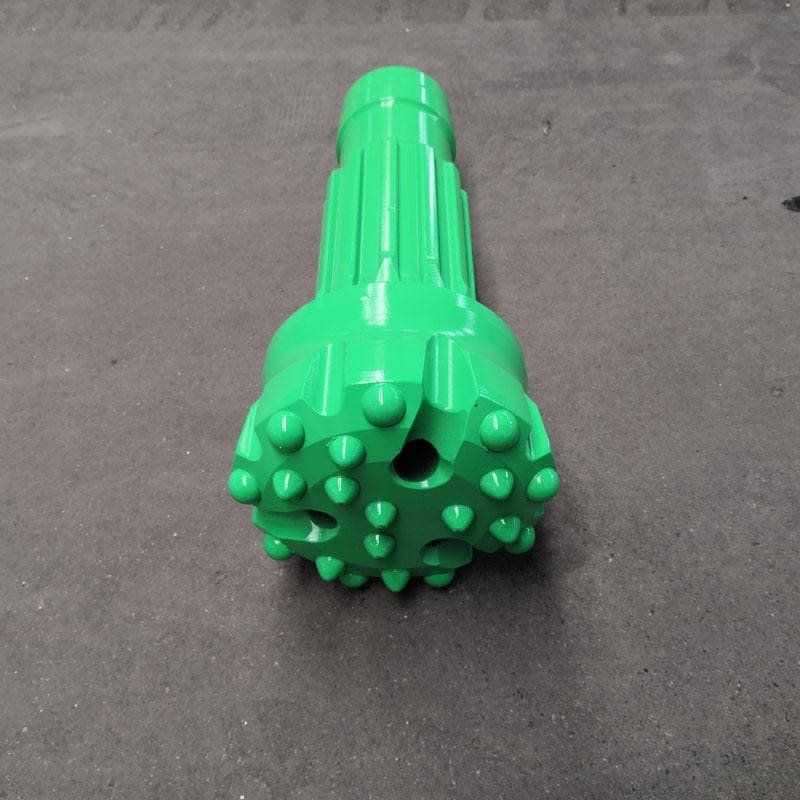Ever watched your tools wear down before your eyes? Crater wear on DTH drill bits is like that, only worse.
Crater wear on DTH drill bits happens when high friction and heat, abrasive rocks, poor cooling, mechanical stress, and chemical reactions erode the bit’s surface, forming craters.
I remember the first time I noticed this issue while on a job site. One moment everything was running smoothly, and the next, performance plummeted. Understanding the intricacies of each cause is crucial. Let's break down these factors to help you optimize your drilling operations and prolong tool life.
High friction causes crater wear on DTH drill bits.True
Friction between the bit and rock generates heat, leading to wear.
Chemical interactions have no effect on DTH drill bits.False
Chemical reactions can weaken the bit material, causing wear.
How Does High Temperature Affect Drill Bit Longevity?
Ever felt the frustration of watching a shiny new drill bit wear down too quickly? I've been there, and it turns out high temperatures play a sneaky role in this.
High temperatures impact drill bit longevity by increasing wear and causing material degradation. This results in reduced efficiency and premature failure, leading to frequent replacements and higher costs.

Heat Generation and Its Impact
Let me take you back to a drilling project I was involved with a few years ago. We were deep into a tough granite site, and I noticed the drill bits were wearing out faster than anticipated. It felt like our bits were melting away under the intense heat of the operation. The friction between the drill bit and rock was generating significant heat, especially as we pushed the machinery to its limits with high speeds and heavy loads. This heat softened the bit material, particularly the carbide buttons, reducing their hardness and increasing wear susceptibility. In our case, some bits even failed prematurely, cutting short their lifespan1.
Abrasive Rock and Wear Patterns
I remember drilling in a particularly abrasive sandstone that seemed to devour bits for breakfast. These abrasive rocks contain hard minerals that act like sandpaper, speeding up wear. The combination of high temperature and abrasive interaction created crater-like depressions on the bit surface, a pattern known as crater wear. It was frustrating to replace bits more often than we'd budgeted for, impacting both our time and bottom line.
Cooling and Flushing
A lesson learned from those early projects was the importance of proper cooling and flushing. Without it, debris builds up around the bit, increasing friction and heat generation. I started ensuring effective flushing with air or drilling fluids to remove rock cuttings and dissipate heat, which made a world of difference in mitigating excessive wear. Implementing these cooling strategies can significantly extend the bit's useful life2.
| Factors | Effect on Longevity |
|---|---|
| High Friction | Increases heat, leading to thermal softening |
| Abrasive Materials | Accelerates wear through mechanical abrasion |
| Inadequate Cooling | Leads to debris buildup and increased wear |
Mechanical Stress and Environmental Conditions
High-impact energy from DTH drilling concentrates stress on the drill bit, especially at the interface between carbide buttons and steel bodies. This stress can cause cratering and material removal, further compounded by high temperatures. Additionally, in environments where we faced corrosive conditions, chemical interactions accelerated degradation of drill bits. It really emphasized the need for optimized drilling conditions3.
Understanding how high temperature impacts drill bit longevity is crucial for enhancing performance and reducing costs. By controlling heat generation through proper operational practices and selecting high-quality materials, you can significantly extend the service life of your drilling equipment.
High temperature causes drill bit thermal softening.True
Heat reduces hardness, increasing wear susceptibility.
Cooling systems have no effect on drill bit longevity.False
Proper cooling dissipates heat, reducing wear.
How Do Abrasive Rock Materials Contribute to Crater Wear?
Have you ever wondered why some drill bits seem to wear out so quickly in tough rock environments?
Abrasive rock materials significantly contribute to crater wear by eroding the cutting surfaces of drilling tools, primarily due to hard minerals like quartz and feldspar that act like sandpaper, creating depressions and diminishing tool efficiency.
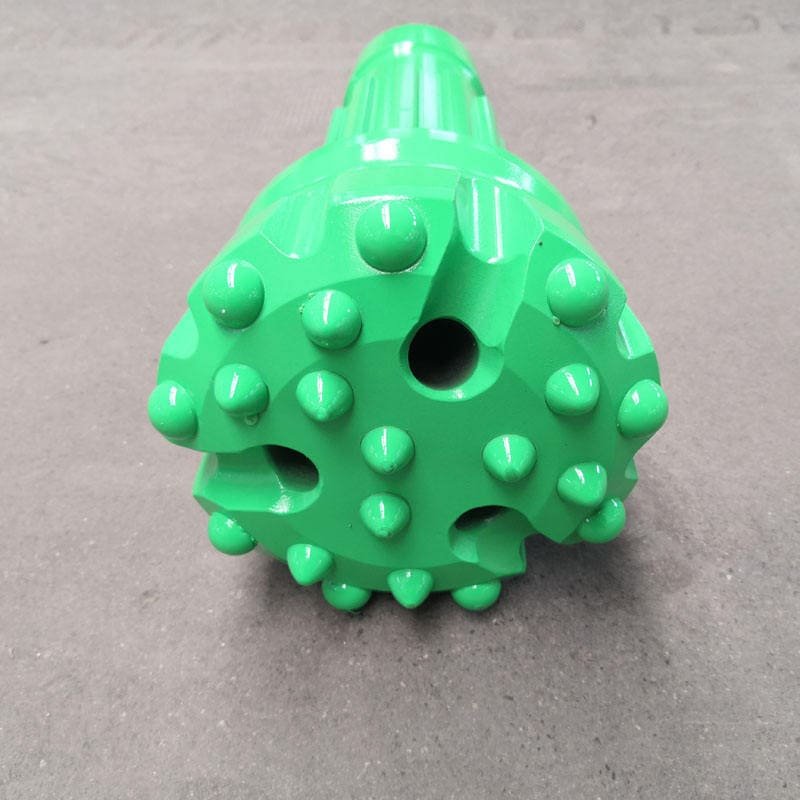
The Science Behind Crater Wear
Crater wear is a fascinating phenomenon that I’ve observed during my years in the drilling industry. It happens when drill bit surfaces slowly erode, much like how a river carves its path through rock over millennia. This erosion is due to constant contact with abrasive minerals4 found in rocks like granite and sandstone. These minerals, akin to nature's sandpaper, gradually etch away at the bit, leaving crater-like depressions.
How Abrasive Rocks Accelerate Wear
- Mineral Composition: I remember this one project where we were drilling through particularly challenging granite. The team quickly noticed that bits were wearing down faster than usual, a problem we traced back to the rock's mineral composition. Rocks with high concentrations of quartz or feldspar are especially abrasive, leading to increased wear.
- Erosion Mechanism: As the drill rotates, these hard particles methodically wear down the bit’s surface, forming crater-like depressions.
Analyzing Impact in Different Rock Types
Table: Abrasive Levels in Common Rock Types
| Rock Type | Abrasive Minerals | Impact on Wear |
|---|---|---|
| Granite | Quartz | High |
| Sandstone | Feldspar | Moderate |
| Limestone | Calcite | Low |
Drilling through granite usually results in more pronounced crater wear than limestone due to these abrasive minerals.
Mitigation Techniques
To battle the effects of abrasive materials, we’ve implemented several techniques:
- Using High-Quality Carbide Bits: These bits are more resistant to erosion and can extend the life of the drill bit even when working in abrasive conditions.
- Enhanced Cooling Systems: Investing in enhanced cooling systems can dramatically reduce friction and heat, minimizing thermal softening5 and subsequent wear.
Practical Insights from Industry
In my line of work, periodic inspection of drill bits is non-negotiable. Analyzing wear patterns allows us to tweak drilling parameters to minimize impact. Plus, adopting advanced coatings on bits adds a protective barrier against abrasive materials.
Understanding these interactions is vital for engineers and operators aiming to extend tool life and efficiency in challenging drilling environments. Delving deeper into material science can unlock tailored solutions for specific geological conditions. Further Reading6 on this topic can offer more specialized insights.
Granite causes more crater wear than limestone.True
Granite contains quartz, a hard mineral, leading to higher wear.
Limestone is more abrasive than sandstone.False
Limestone has calcite, less abrasive than feldspar in sandstone.
Why is Adequate Cooling Crucial for Preventing Wear?
Picture this: it's a scorching summer day, and you're stuck in traffic. Without a working AC, you'd be sweating bullets. Similarly, machines need cooling to keep running smoothly.
Adequate cooling is crucial in preventing wear by dissipating heat from friction and operations. This minimizes thermal stress, preserving material strength and extending equipment lifespan.
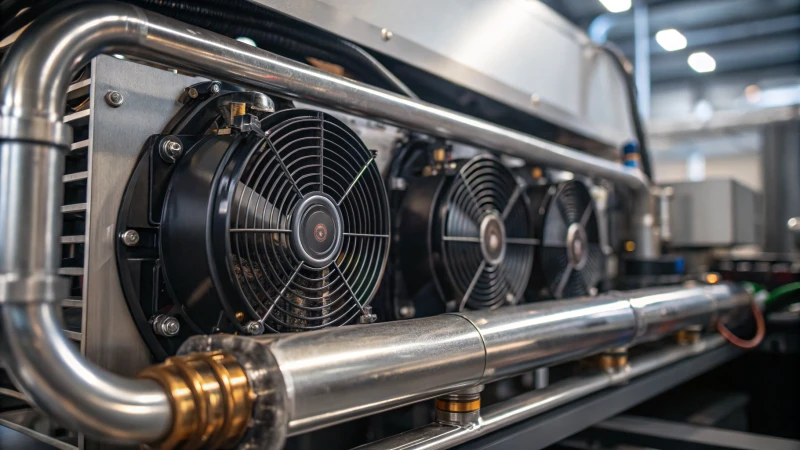
Understanding the Impact of Heat
I remember the time when my car's radiator broke down during a road trip. The engine overheated, and I was stranded by the side of the road. Much like that experience, mechanical systems generate heat from friction, leading to potential material degradation. This heat, if not managed, can weaken components just as it did with my car, causing thermal stress7 and increasing wear.
Mechanisms of Cooling
Whether it's the fan cooling my laptop or the intricate liquid systems in industrial machines, cooling mechanisms are everywhere. Liquid cooling is like a refreshing shower, circulating fluids to absorb and carry away heat. Air cooling, on the other hand, is akin to standing in front of a fan on a hot day. Choosing between them depends on specific applications8 and environments.
| Cooling System | Advantages | Disadvantages |
|---|---|---|
| Liquid Cooling | Efficient heat transfer, quieter operation | More complex, potential for leaks |
| Air Cooling | Simpler design, lower maintenance | Less efficient at high temperatures |
Case Study: Drill Bits
I recall visiting a construction site where I learned about drill bits' cooling needs. In operations using DTH drill bits, inadequate cooling can lead to crater wear, which I saw firsthand on-site. The carbide material softens without cooling, reducing efficiency and hiking up costs due to frequent replacements9.
Cooling in Different Contexts
- Automotive: Just like the time my engine overheated, vehicle cooling systems prevent breakdowns.
- Industrial Machinery: Factories I've toured often use extensive cooling systems to maintain optimal conditions.
- Electronics: My computer's fan kicks in to prevent thermal throttling during intense gaming sessions.
Implementing adequate cooling solutions isn't just about avoiding breakdowns; it's about ensuring longevity and reliability across various industries. It keeps machines within safe temperature ranges, ultimately extending their service life and reducing failures due to wear.
Excessive heat can weaken material integrity.True
Heat causes thermal stress, leading to material degradation.
Air cooling is more efficient than liquid cooling.False
Liquid cooling transfers heat more efficiently than air cooling.
How do mechanical stress and impact cause wear?
Have you ever wondered how the forces around us subtly but surely cause things to wear down over time?
Mechanical stress and impact contribute to wear by applying forces that deform materials, leading to surface damage. Repeated stress can cause wear through mechanisms like abrasion, adhesion, and fatigue, gradually degrading material surfaces.
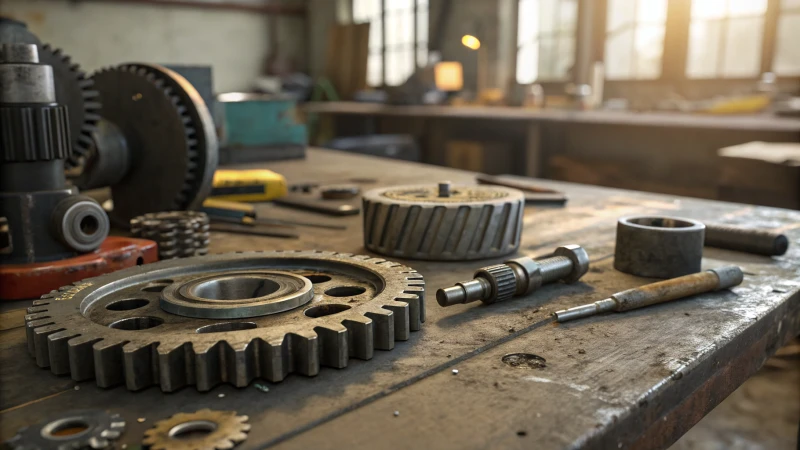
The Dynamics of Mechanical Stress
I remember the first time I realized how stress affects materials. It was during a summer job in construction, watching concrete pillars buckle under weight they weren’t designed to bear. Mechanical stress refers to these internal forces within a material when external loads are applied, and it comes in different flavors.
- Compressive Stress: Picture squeezing a stress ball. In construction, materials like concrete10 experience compressive stress, with forces trying to squish them into smaller volumes.
- Tensile Stress: Think of stretching a rubber band. Metals, under pulling forces, endure tensile stress as they try to elongate.
- Shear Stress: This one's like sliding two playing cards against each other. In cutting operations, shear stress arises from parallel forces acting on a surface.
Each type of stress has its own way of altering material structure, leading inevitably to wear over time.
Types of Impact Wear
Impact wear is a bit like what happens when you keep knocking on a door over and over. Eventually, you leave a mark. This wear results from collisions between surfaces, causing deformation or fragmentation. Here's how it breaks down:
| Type | Description |
|---|---|
| Abrasive Wear | Caused by hard particles or surfaces sliding across a softer material, leading to grooves. |
| Adhesive Wear | Occurs when materials transfer from one surface to another due to bonding at contact points. |
| Fatigue Wear | Results from cyclic loading, causing micro-cracks that propagate over time. |
Understanding these types helps in choosing the right materials and designing processes that minimize wear.
Material Selection and Design Considerations
Choosing the right materials is like picking the right hiking boots—you need durability and fit for the journey ahead. Engineers often select alloys or composites with specific traits like hardness or ductility to withstand expected stresses.
- Hardness: High hardness levels in materials resist abrasive wear more effectively. For example, tool steels11 are ideal in cutting tools for their durability.
- Ductility: Ductile materials absorb impact energy without breaking, which is perfect for high-impact environments.
Design tweaks like rounded edges or coatings can also help reduce stress concentrations, extending a product's life.
Real-world Applications and Examples
Every time I hear the screech of car brakes or the roar of a jet engine, I think about the challenges industries face with wear. For instance:
- Automotive: Brake pads face adhesive and abrasive wear daily as they grind against rotors.
- Aerospace: Jet engine components endure high impact stresses and fatigue cycles repeatedly.
And in mining? The understanding of crater wear12 informs how we design drill bits to last longer in tough conditions.
These insights remind us why comprehending mechanical stress and impact is crucial—not just for improving material performance but also for prolonging their lifespan across various industries.
Compressive stress increases material volume.False
Compressive stress reduces material volume, not increases it.
Abrasive wear involves hard particles causing grooves.True
Hard particles slide across surfaces, creating grooves.
How Do Chemical Interactions Impact Crater Formation?
Ever wonder how those impressive craters on distant planets come to be? The secret might just lie in the chemical whispers between materials.
Chemical interactions can indeed speed up crater formation by altering material properties at the molecular level, especially where chemical reactions weaken structural integrity, leading to faster wear.
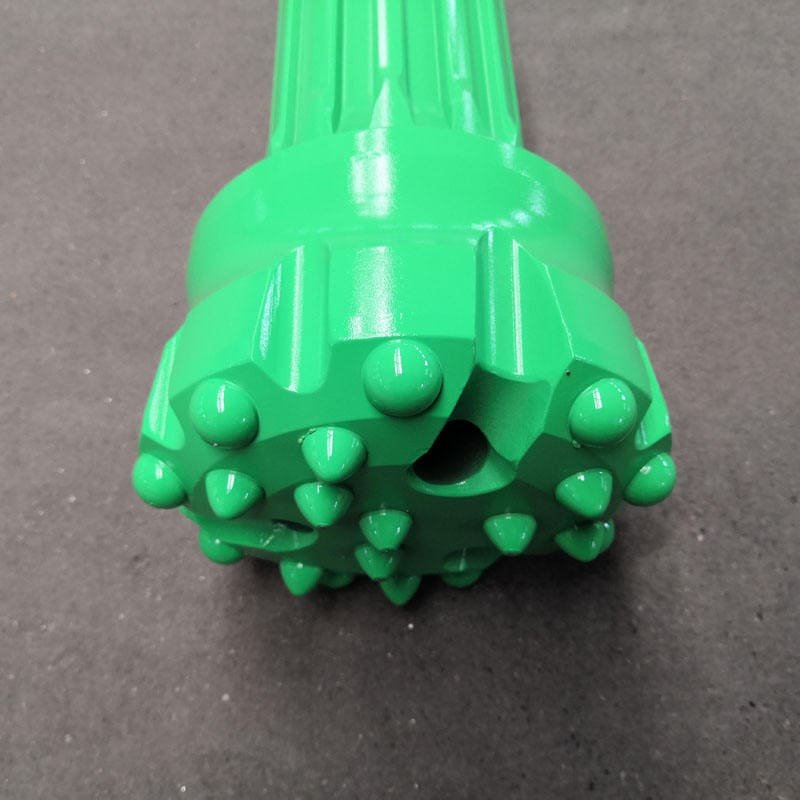
The Role of Chemical Reactions in Crater Wear
I've always been fascinated by how seemingly minor chemical reactions can dramatically alter the landscape—literally! Picture this: you're deep-sea drilling, surrounded by the vast, mysterious ocean. The drill bit is your trusty companion, piercing through layers with a rhythmic persistence. But beneath this dance lies a silent saboteur—chemical reactions. In these environments, the intricate dance of chemicals with carbide materials used in drill bits can lead to corrosion13 or softening, speeding up wear.
Case Studies: Chemical Environments
I remember one particular project in mining where the environment was anything but forgiving. The combination of water and minerals created a highly corrosive playground. One moment, your equipment is gleaming; the next, it’s tarnished, cratered by the relentless assault of chloride ions in seawater. The rapid wear and tear were a testament to the powerful influence of these chemical interactions.
| Chemical Agent | Effect on Material | Example |
|---|---|---|
| Chloride Ions | Corrosion | Seawater on steel |
| Sulfides | Material weakening | Acid mine drainage |
| Oxidizing Agents | Increased brittleness | Oxygen in air |
Molecular Dynamics and Material Science
Diving deeper into the science, understanding these interactions at a molecular level is like peering into an invisible world where mighty forces are at play. I've often been amazed at how molecular dynamics simulations reveal that specific chemicals can stealthily penetrate material surfaces, breaking down bonds and hastening erosion. This insight is particularly crucial for materials like tungsten carbide used in drilling bits14.
Prevention Strategies
To combat these invisible foes, I've learned that prevention is key. Selecting materials that stand strong against chemical reactions is vital. Employing advanced coatings and treatments can shield surfaces from corrosive agents. Regular maintenance and keen monitoring for signs of chemical wear aren't just strategies—they're lifelines that prolong equipment life and curb crater formation.
By delving into these aspects, industries gain a clearer picture of chemical interactions' impact on crater formation and can explore innovative ways to minimize their effects through technological advancements15.
Chemical reactions can weaken drill bit materials.True
Chemicals react with carbide materials, causing corrosion or softening.
Oxidizing agents decrease material brittleness.False
Oxidizing agents actually increase material brittleness.
How Can I Reduce Crater Wear on My Drill Bits?
Ever found yourself frustrated with your drill bits wearing out too quickly? It's a common issue, but with the right strategies, you can extend their life significantly.
To mitigate crater wear on drill bits, focus on optimizing drilling parameters, enhancing cooling systems, using high-quality materials, and performing regular maintenance. These approaches help in reducing friction, dissipating heat, and improving bit durability.
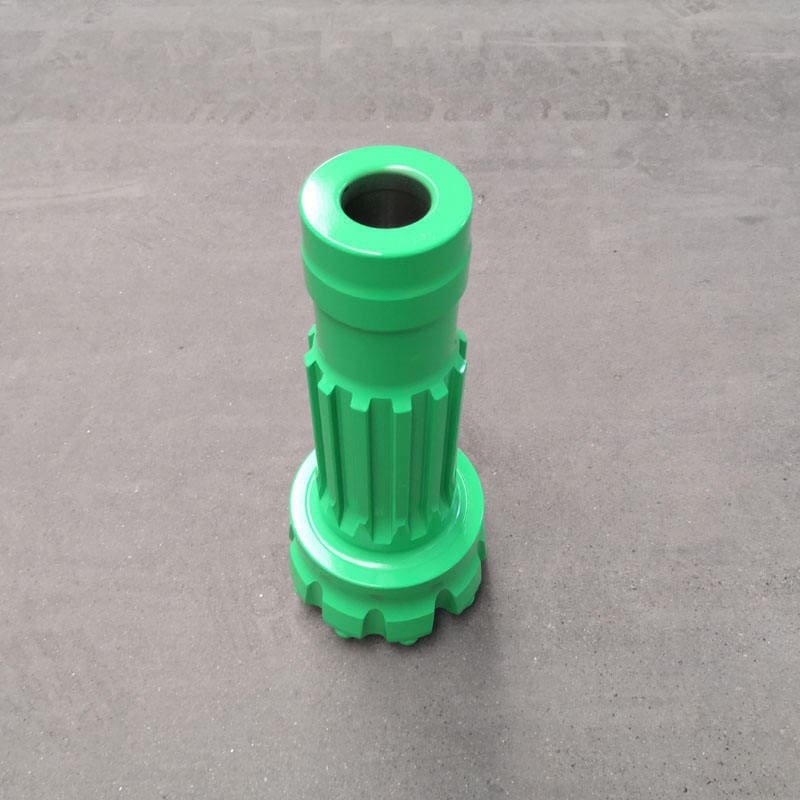
Optimize Drilling Parameters
Effective Parameter Control:
I remember when I first started working with drill bits, I quickly realized the importance of adjusting drilling speeds, hammer pressure, and feed force. Tailoring these settings to match the specific rock type and drilling conditions made a huge difference. Here's a handy table to guide you:
| Rock Type | Speed (RPM) | Pressure (psi) | Feed Force (lbs) |
|---|---|---|---|
| Sandstone | 300 | 150 | 2000 |
| Granite | 250 | 200 | 2500 |
| Limestone | 350 | 100 | 1500 |
Enhance Cooling and Flushing Systems
Cooling Efficiency:
I learned the hard way that proper flushing with air or fluids is crucial for removing debris and effectively cooling the drill bits. Implementing high-pressure systems can make a world of difference. Check out these advanced flushing techniques16 for better results.
Use High-Quality Drill Bits
Material Selection:
Investing in bits made from heat-resistant materials like premium carbide was a game-changer for me. These materials withstand higher temperatures without softening, reducing wear. Explore some material innovations17 that offer enhanced durability.
Regular Maintenance and Inspection
Proactive Upkeep:
Keeping up with regular inspections to spot wear signs early on has saved me from a lot of headaches. Routine maintenance ensures that any worn parts are replaced before they compromise performance. Here are some maintenance best practices18 I've found helpful.
By integrating these strategies, I've managed to tackle crater wear effectively, keeping operations smooth and cost-efficient. Continuously expanding my knowledge of these practices has truly improved my drilling outcomes.
Adjusting drilling speed reduces crater wear.True
Optimizing speed minimizes stress and heat, reducing wear.
High-pressure flushing increases drill bit wear.False
High-pressure systems effectively cool and remove debris, reducing wear.
Conclusion
Crater wear on DTH drill bits results from high friction, heat, abrasive rocks, poor cooling, and mechanical stress, significantly impacting performance and tool longevity in drilling operations.
-
Learn how thermal softening reduces hardness and increases wear in carbide bits. ↩
-
Discover cooling strategies that extend drill bit lifespan. ↩
-
Explore the impact of mechanical stress on drill bit wear patterns. ↩
-
Explore how abrasive minerals interact with drilling tools, providing insights into their wear mechanisms. ↩
-
Learn about thermal softening to understand how high temperatures affect drill bit material durability. ↩
-
Discover advanced material solutions that enhance the durability and performance of drilling tools. ↩
-
Understanding thermal stress helps identify why cooling is essential to maintain equipment integrity. ↩
-
Discovering effective cooling solutions aids in selecting the right system for specific operational needs. ↩
-
Exploring this link shows the financial impact of poor cooling practices. ↩
-
Explore how compressive stress influences concrete strength and longevity, crucial for construction projects. ↩
-
Discover why tool steels are preferred in manufacturing for their high hardness and resistance to wear. ↩
-
Learn about the factors leading to crater wear in mining equipment to improve design and efficiency. ↩
-
This link explains how chemical corrosion affects carbide materials, detailing processes and prevention strategies. ↩
-
Discover how molecular dynamics simulations provide insights into material erosion under chemical influences. ↩
-
Explore advanced coatings designed to protect against chemical wear, extending equipment life. ↩
-
This link offers insights into innovative flushing methods that improve cooling efficiency, crucial for reducing crater wear. ↩
-
Discover how the latest material technologies contribute to creating more durable, heat-resistant drill bits. ↩
-
Explore a detailed guide on maintenance routines that prolong the life of drill bits by preventing wear. ↩

